
This article surveys the postage stamps and postal history of the Republic of South Moluccas . Historical or political incidents can be found in the main article.

This article surveys the postage stamps and postal history of the Republic of South Moluccas . Historical or political incidents can be found in the main article.
Although the Republic of South Moluccas did not issue its own postage stamps, several stamps bearing the country's name can be found. They are so-called bogus stamps, which are private stamp issues and were not issued by any postal administration of the South Moluccas.
There are three distinct bogus stamp issues of the Republic of South Moluccas:
In 1950, 17 stamps of the Dutch East Indies and Indonesia were overprinted with "Republik Maluku Selatan". Many philatelists believe that the stamps could have been used locally. However, the majority assumes that they are stamp forgeries.
Several one- and three-coloured stamp issues of South Moluccas lacking the date of issue are known. They were possibly sold by the exiled government in the Netherlands. These issues were supposed to announce the archipelago and flag of the Republic of South Moluccas, point out the concern of this exile government, and win target audiences, such as the Universal Postal Union (UPU), the United Nations (UN), and General Douglas MacArthur for their goals. But there are also stamps where no unambiguous reason can be given for their issuance.
In 1955, approximately 150 coloured triangular or rectangular stamp forgeries by New York and Munich stamp dealer Henry Stolow (1901–1971) appeared on the market without a date of issue. These stamp issues were printed in the Österreichische Staatsdruckerei without verification of their legality. These issues do not bear any hint of their date of issue, as German stamps do, for example. Therefore, it is completely futile to assign them to specific years of issue, as is sometimes done. They were never used for postage, so there are only mint copies.
In 1991, Peter Doerling [1] wrote:
Thus in 1954, some gentlemen appeared at the Vienna Staatsdruckerei, among them a German stamp dealer, who wanted to have stamps printed for the new REPUBLIC MALUKU SELATAN. In fact, this republic was proclaimed on the Indonesian Moluccas islands of Ambon and Ceram, whose Christian inhabitants no longer wanted to be part of the Islamic republic of Indonesia. The republic was in existence for only a short time; warships fired on Ambonia and many inhabitants fled to the Netherlands. Of course, this was only a pretense for the speculators, because they ordered about 150 stamp issues, among them a lot of beautiful animal and plant themes as well as a UN series, all of them merely fantasy issues without any philatelic value.
Respected stamp catalogs and stamp dealers do not sell stamps from the Republic Maluku Selatan. No valid stamps from that region are known to the Michel editorial department. [2]
Regarding the coloured stamp issues sold since 1955, the Michel editorial department stated: [3]
They are merely bogus stamps, which cannot be found in any respectable catalogue, and should not be offered by any dealer who wants to be regarded as reputable – unless under the explicit description of "bogus stamp".
Ulrich Häger wrote in the "Großes Lexikon der Philatelie" (Great Encyclopaedia of Philately) under the keyword Maluku Selatan:
In 1955, approx. 150 commemorative stamps with the country name MALUKU SELATAN gradually appeared, which were supposed to have come from a new independent state formed on the Moluccas. In fact, there were efforts on the Moluccas to become independent from Indonesia, but the formation of the country never took place. But that was no obstacle for a well-known New York stamp dealer; via a middleman, he placed an order for the production of series of stamps at the Staatsdruckerei, which was promptly carried out, without making sure that Maluku Selatan really existed. These stamps, which were initially bought by many collectors due to lack of knowledge, at best have only a low value as curiosities.
The Scott Standard Postage Stamp Catalogue wrote under the keyword South Moluccas:
It appears that the stamps of the so-called republic of South Moluccas were privately issued and had no postal use. Accordingly, they are not recognized as postage stamps.

A revenue stamp, tax stamp, duty stamp or fiscal stamp is a (usually) adhesive label used to designate collected taxes or fees on documents, tobacco, alcoholic drinks, drugs and medicines, playing cards, hunting licenses, firearm registration, and many other things. Typically, businesses purchase the stamps from the government, and attach them to taxed items as part of putting the items on sale, or in the case of documents, as part of filling out the form.
Each "article" in this category is a collection of entries about several stamp issuers, presented in alphabetical order. The entries are formulated on the micro model and so provide summary information about all known issuers.

Illegal stamps are postage stamp–like labels issued in the names of existing independent countries or territories used to defraud postal administrations, stamp collectors, and the general public. Often, but not always, a member nation of the Universal Postal Union (UPU) will have asked the UPU to issue an "International Bureau Circular" advising others of the illegal stamps. According to the UPU, the market is estimated to be at least $500 million per year.
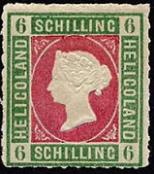
During the period when Heligoland was a British possession, about 20 postage stamps were issued between 1867 and 1890. There were up to eight printings of a single denomination and also a large volume of reprints which are known as the Berlin, Leipzig and Hamburg Reprints, respectively. The Berlin reprints are sometimes better quality than the originals. The reprints were done between 1875 and 1895. Consequently, many "old" collections contain reprints rather than originals. Some believe there were seven million reprints as compared to the known 1½ million originals, of which perhaps half were sold through the post office and the remainder sold to dealers when withdrawn from use. A few printings were never postally sold but nevertheless found their way into the hands of dealers. The stamps were printed by the Prussian State Printing Office in Berlin. They were denominated in the Hamburg Schilling until 1875, when both German Reich and British values appeared on each stamp issue. All are embossed with a silhouette of Queen Victoria excepting the four highest values which represent Heligoland escutcheons.

In general, philatelic fakes and forgeries are labels that look like postage stamps but have been produced to deceive or defraud. Learning to identify these can be a challenging branch of philately.
Henry Stolow was a stamp dealer in Berlin, New York, and Munich who was behind the issue of numerous stamps of doubtful validity.
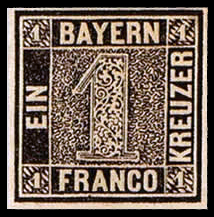
This is a survey of the postage stamps and postal history of Germany and philatelically related areas. The main modern providers of service were the Reichspost (1871–1945), the Deutsche Post under Allied control (1945–1949), the Deutsche Post of the GDR (1949–1990), the Deutsche Bundespost (1949–1995), along with the Deutsche Bundespost Berlin (1949–1990), and are now the Deutsche Post AG.

Germania stamps are definitive stamps that were issued by the German Empire and the Weimar Republic between 1900 and 1922, depicting Germania. They represent the longest running series in German philately and are in their many variations and derivations an essential part of German philatelic collections.

A specimen stamp is a postage stamp or postal stationery indicium sent to postmasters and postal administrations so that they are able to identify valid stamps and to avoid forgeries. The usual method of invalidating the stamps is either overprinting in ink or perforating the word Specimen across the stamp and where English is not the common language, the words Muestra (Spanish), Monster (Dutch), Muster (German) or Образец have been used instead.

This is a survey of the postage stamps and early postal history of Sudan. Sudan was governed by the United Kingdom and Egypt from 1898. Independence was proclaimed on 1 January, 1956, and independent Sudan became a member of the Universal Postal Union (UPU) on 27 July 1956.
This is a survey of the postage stamps and postal history of British Bechuanaland.
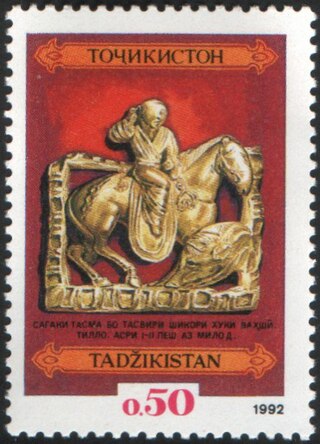
This is a survey of the postage stamps and postal history of Tajikistan.
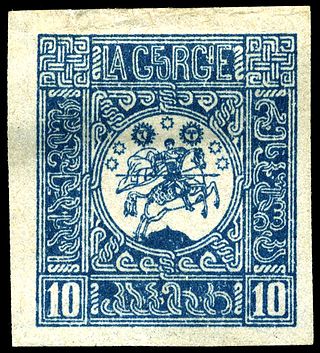
This is a survey of the postage stamps and postal history of Georgia.

This is a survey of the postage stamps and postal history of Indonesia.

This is a survey of the postage stamps and postal history of Ethiopia. Long an independent state in Africa, messages were originally carried by couriers called méléktegnas, who held the letters attached to a stick.

The following is a survey of the postage stamps and postal history of Somalia. From the late 1800s to 1960, northwestern present-day Somalia was administered as British Somaliland, while the northeastern, central and southern part of the country were concurrently administered as Italian Somaliland. In 1960, the two territories were unified as the Somali Republic.
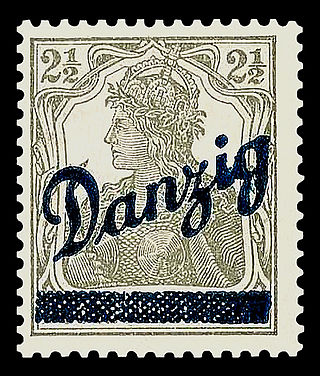
This is an overview of the postage stamps and postal history of the Free City of Danzig .

Jean Pierre Moquette moved from the Netherlands to Java in 1873. He worked as a bookkeeper at the sugar plantation and factory 'Kremboeng', in Sidoarjo near Surabaya. He was also a stamp and coin dealer in Surabaya. He became known for the alterations of stamps and postal stationery. Besides philately, numismatics and his bookkeeping work in the sugar business, he was a researcher in the field of sugar cane. For his research of cane sowing and crossing he was in 1898 appointed Officer of the Order of Orange-Nassau. In 1900 he founded the Indonesian Numismatic Cabinet in which he was active as curator. In the early 1900s he did ethnographic and historical research for which in 1924 he was appointed correspondent for the Royal Netherlands Academy of Arts and Sciences in Amsterdam.
John Wattilete is the fifth and incumbent president in exile of the Republic of South Maluku and has been in office since 2010. He was preceded by Frans Tutuhatunewa.

London 2022 International Stamp Exhibition was an international stamp exhibition held from 19 to 26 February 2022 at the Business Design Centre in Islington, London. The exhibition was granted patronage from the Fédération Internationale de Philatélie and was recognised by the Federation of European Philatelic Associations.
in German